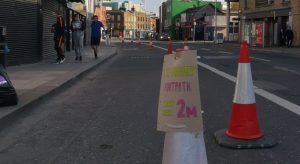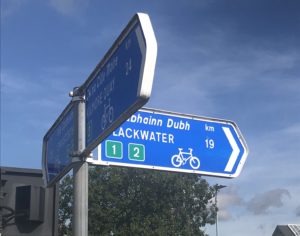At December’s council meeting, Wexford Town Mayor, Leonard Kelly, made this proposal which was unanimously ratified by all county councillors.
“In the Program for Government a commitment to an allocation of 10% of the total transport capital budget for cycling projects and an allocation of 10% of the total capital budget for pedestrian infrastructure was made. The commitment to cycling and pedestrian projects is set at 20% of the 2020 capital budget (€360 million) per year for the lifetime of the Government.
Mayor Leonard Kelly’s now unanimously ratified proposal at Wexford Co Co meeting Dec. 2020
In order to place Co. Wexford front and centre of securing our share of this funding, I propose that Wexford county council prioritise the development and adoption of a high-quality cycling policy and that the department of Transport are approached by the council to have Wexford, New Ross, Enniscorthy and Gorey included under the remit of the NTA from where the expertise of the newly created cycle design office can be sought.
As part of this I propose that Wexford county council carries out a full assessment of our roads network and develops cycle network plans paying particular attention to the development and renewal of walking and cycling strategies for urban and rural settings (for travel to education, work and for recreation), which will be implemented with the help of a suitably qualified Cycling Officer with clear powers and role”
There’s a lot included in Cllr. Kelly’s council motion which I helped draft the wording of, so over the next series of blogs, I want to unpack this proposal and drill down further in to what this should mean in terms of agreement for the delivery of cycling infrastructure here.
High Quality cycling policy.
‘Wexford county council prioritise the development and adoption of a high-quality cycling policy’
Extract from the agreed council proposal Dec 2020
The nearest we have to what recommended high quality means in terms of urban and suburban cycling infrastructure, comes from guidance provided by the NTA, in its publication called the National Cycle Manual.
(Many would say that it needs updating and amalgamation with other manuals such as the Design Manual for Urban Roads and streets and Transport Infrastructure Ireland’s, Rural Cycleway Design Manual, but this is what we have for now.)
This fairly substantial manual presents the current best practice in providing proper cycling facilities in contemporary urban and suburban environments.
To achieve this degree of high quality that has been agreed to, we need to go beyond the bare minimum advice and indeed to implement its principals as mandatory rather than advisory.. and then some.
Leaving this solely to councils such as Wexford Co Co to determine what “high-quality” means to them may simply be a waste of more road paint and we need to see movement away from that if the agreed high quality end product is to be achieved.
Shared facilities.
We could cover a lot in this particular blog in relation to high quality, but we are going to concentrate on 2 projects; one a recently completed project at the Loreto Secondary School and two, a currently taking place project on the Newtown Rd., between The Applegreen garage and The Maldron.
Both of of these involve shared facilities – areas designed for pedestrians and cyclists to mix.
From the National Cycle Manual – 1.9.3 Shared facilities
Straight off the bat, in this section of the cycle manual, you see the opening paragraph from the relevant section of the National Cycle Manual, and we are not off to a great start!
Something recommended in a National manual as something to be ‘avoided in urban areas as far as possible’, is certainly not something that should be your starting point when seeing a high quality end product.
‘Shared facilities are disliked by both pedestrians and cyclists and result in reduced Quality of Service for both modes. With the exception of purpose-designed shared streets, shared facilities should be avoided in urban areas as far as possible’.
National Cycle Manual 1.9.3
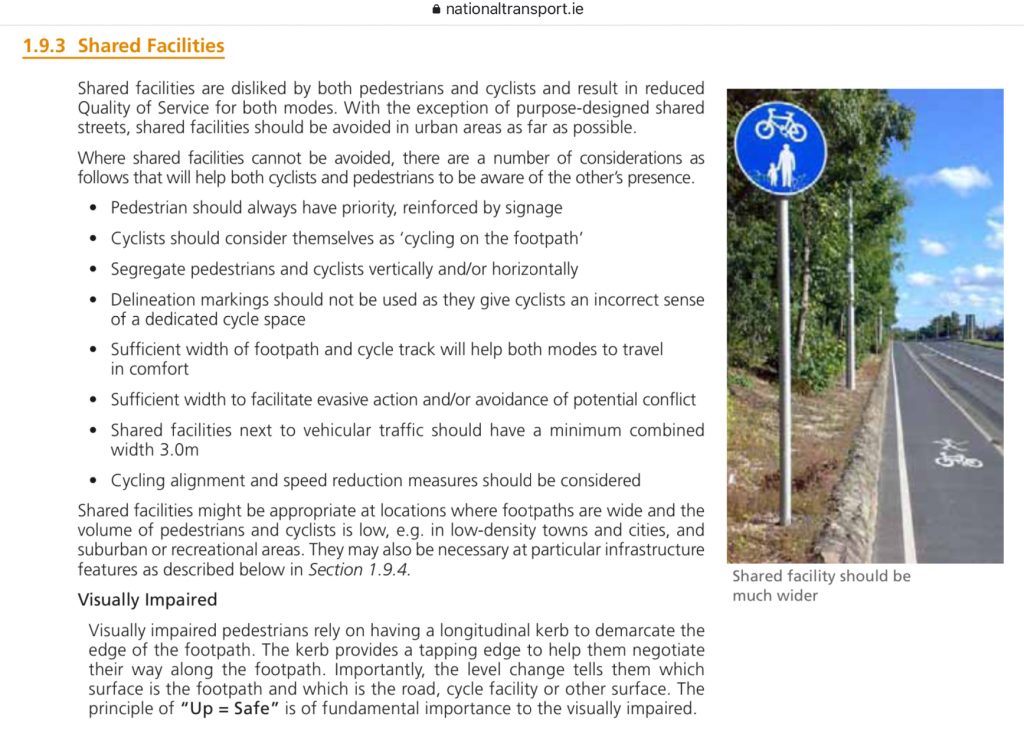
Example situation No. 1 – The approach to the Loreto.
A visit to the 2018 built, Loreto Secondary school itself, will reveal lots of ambition to promote cycling with the provision of a large amount of bike racks there.
Census 2016 showed that just 3 secondary school girls were cycling to school in Wexford town so this degree of ambition is to be greatly admired.
Ambition without a plan to achieve it though is of course, another matter.
The end result is highly predictable and two years after opening, these bike racks remain largely unused.
(These situations tend to replicate themselves when designers and planners concentrate on the low hanging trinkets over high quality infrastructure).
The roads leading to the Loreto are quite hostile for cycling and they had scant cycling infrastructure to begin but a new build would surely provide a decent opportunity to build high quality segregated infrastructure on a green field site.
However as you will see from the attached image (below) of the road leading to the school, this opportunity wasn’t taken at the time.
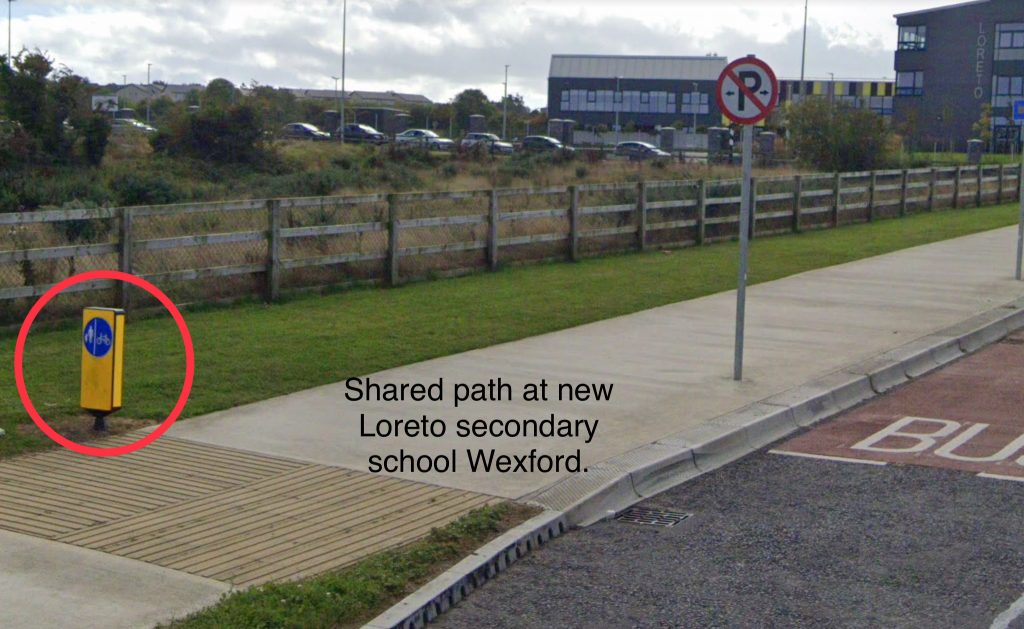
What we now have is a shared path that (to quote the cycle manual) is ‘disliked by both pedestrians and cyclists’, a situation flagged when this document was first published in 2011, a full 7 years prior to the completion of the Loreto project!
If we in Wexford are to honour the ‘high quality’ as voted unanimously at the council in December, then will we be brave enough not to do this again?
Example situation No. 2 – Newtown road shared path.
Next we visit the western section of the Newtown Rd which at the time of writing (Jan 2021) was under construction having received government funding to the tune of €52,000 in the July stimulus package.
(For the record, despite WexBUG having a good relationship with Wexford Co Co, and as a group that represent cyclists, we were not consulted on this or any other July stimulus package cycling projects.)
Again here we have a ‘disliked’ shared path which is not the direction our decision makers should be going if we are to achieve high quality.
But let’s drill down further in to this project –
Small segments of cycling infrastructure should not to viewed in isolation, and in the absence of the invention of the flying bicycle, a longer look should be taken in terms provision for continuity before and after this. (We have written about the Racecourse lane before and you can read that here) Indeed I would suggest that continuity would have been best served by a well planned bidirectional segregated cycle lane for the full length of the Newtown Rd and we will discuss this in a future blog.
The area leading up to this has a mandatory cycle lane that comes to an abrupt ending before the Applegreen garage.
It is currently not clear if this will join in with the new €52,000 project at this stage but from the initial works that I’ve seen, I don’t think it will.
Looking at the image below and seeing the amount of road space available to the left of the Jeep on this section, it’s difficult to see why the cycle lane couldn’t have been continued through here and then onwards to the hard shoulder and beyond or if not, then why that space would not have been left for such a project initially.
I’m sure the council are governed by minimum widths but double the width of a Jeep for a single lane would seem quite generous here.
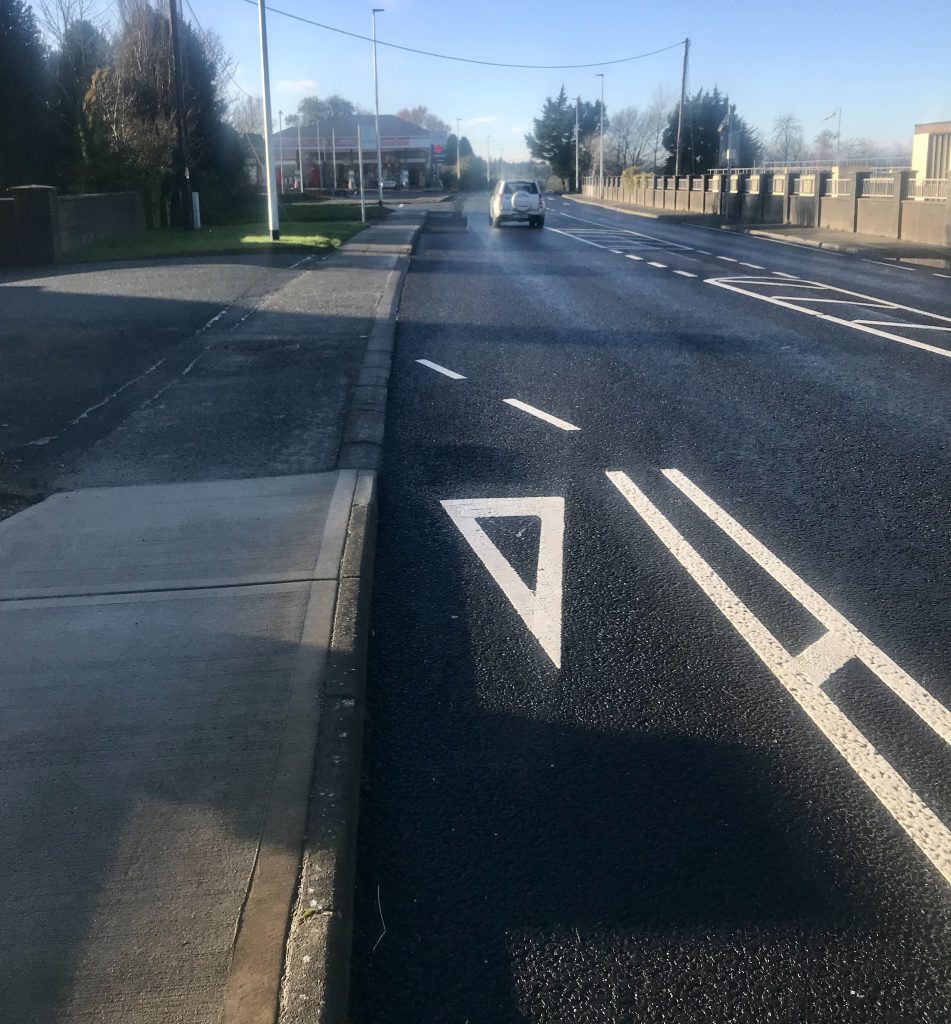
When we get down to the shared path itself, the minimum recommended width is 3metres. However while sections of it may be that width, certainly judging by this image with my bike (which is 1.6 metres in length) this section would struggle to achieve that measurement.
Add lamp posts in to the mix and the whole level of comfort starts to disappear.
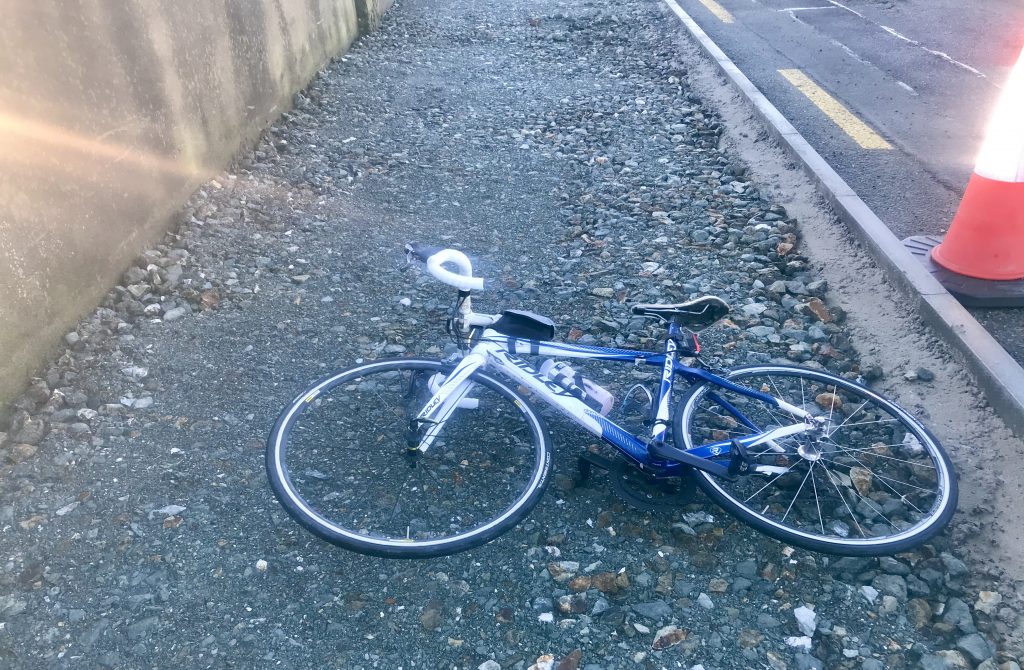
This is also on a downhill section of the road where a freewheeling bicycle ride would effortlessly achieve speeds of up to 40km/hr so I would hazard a guess that many cyclists will continue to use the main carriageway rather than to share this space as a guest of ear phone wearing pedestrians and long lead dog walkers.
When designing and delivering high quality cycling infrastructure it’s is crucial to understand that there are only 2 circumstances where it is mandatory for cyclists to use cycling infrastructure (see image below).
These types of shared paths are according to the National Cycle Manual ‘disliked’ by cyclists so it should not come as any surprise when they are not used.
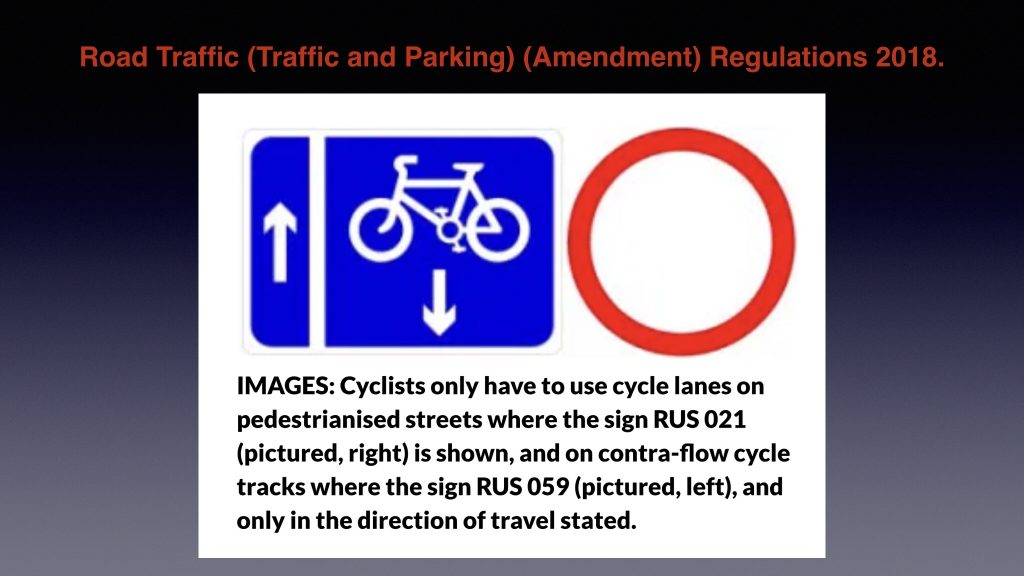
When it comes to design high quality cycling infrastructure, it’s important to understand the difference between designing infrastructure to get the cyclist out of the way of motorised traffic vs designing infrastructure that entices a rider the use it. The former has been a failed strategy and will continue to be so unless we see high quality delivered on our roads
However if we follow through on the potential promise that Cllr. Kelly’s proposal seeks, we give ourselves in Wexford, the opportunity to create conditions where active travel can become part of the public realm rather than waste more taxpayers money on schemes that are ‘disliked’ by those that they are designed for.

